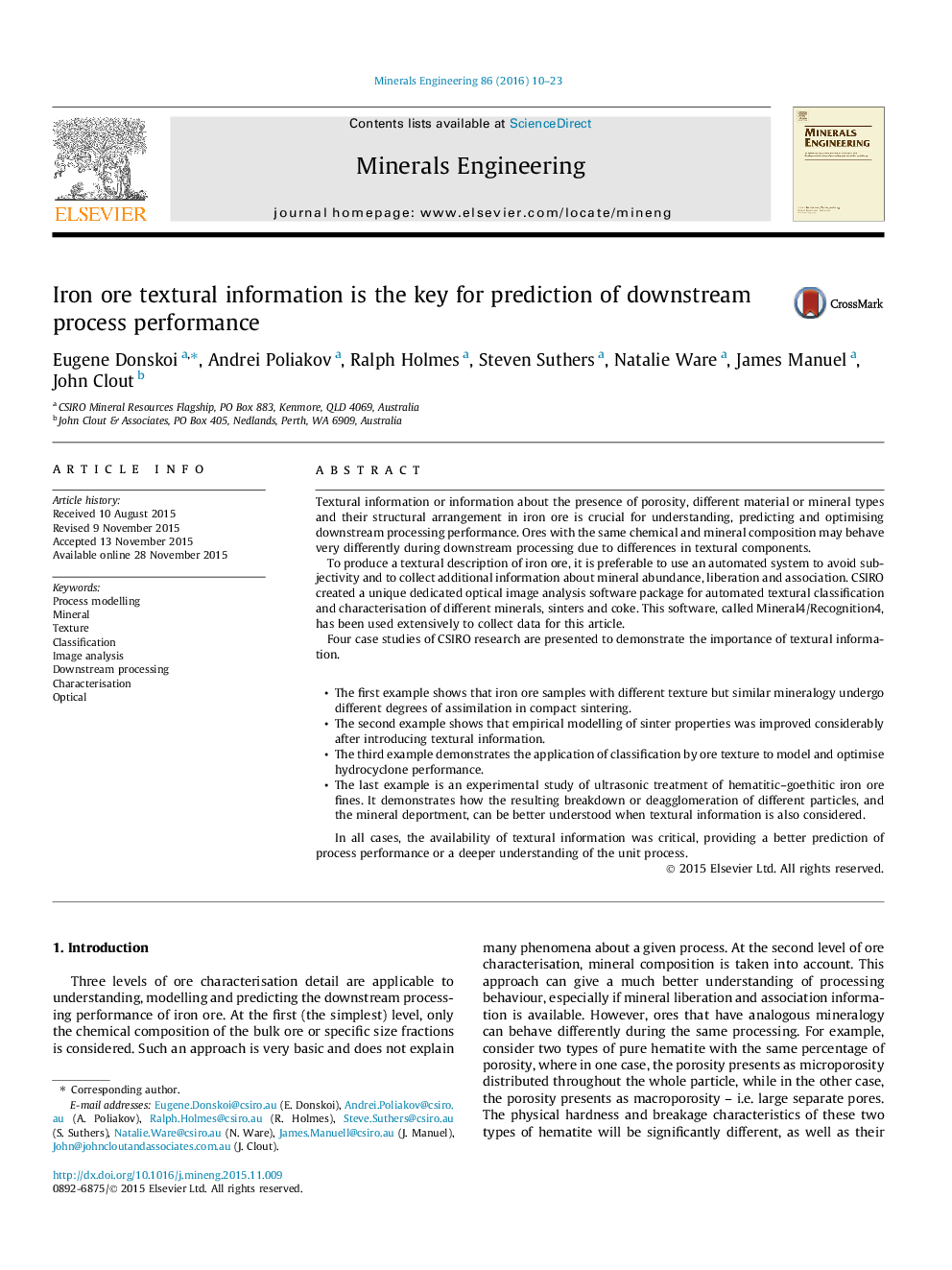| کد مقاله | کد نشریه | سال انتشار | مقاله انگلیسی | نسخه تمام متن |
|---|---|---|---|---|
| 232806 | 465307 | 2016 | 14 صفحه PDF | دانلود رایگان |
• The understanding of ore texture is the next level after chemistry and mineralogy.
• Iron ore sintering and its modelling are dependent on ore blend textural composition.
• Textural classification is superior to liberation classification for modelling beneficiation.
• Textural information improves modelling of downstream processes substantially.
• Textural information gave a deeper understanding of iron ore sonication.
Textural information or information about the presence of porosity, different material or mineral types and their structural arrangement in iron ore is crucial for understanding, predicting and optimising downstream processing performance. Ores with the same chemical and mineral composition may behave very differently during downstream processing due to differences in textural components.To produce a textural description of iron ore, it is preferable to use an automated system to avoid subjectivity and to collect additional information about mineral abundance, liberation and association. CSIRO created a unique dedicated optical image analysis software package for automated textural classification and characterisation of different minerals, sinters and coke. This software, called Mineral4/Recognition4, has been used extensively to collect data for this article.Four case studies of CSIRO research are presented to demonstrate the importance of textural information.
• The first example shows that iron ore samples with different texture but similar mineralogy undergo different degrees of assimilation in compact sintering.
• The second example shows that empirical modelling of sinter properties was improved considerably after introducing textural information.
• The third example demonstrates the application of classification by ore texture to model and optimise hydrocyclone performance.
• The last example is an experimental study of ultrasonic treatment of hematitic–goethitic iron ore fines. It demonstrates how the resulting breakdown or deagglomeration of different particles, and the mineral deportment, can be better understood when textural information is also considered.In all cases, the availability of textural information was critical, providing a better prediction of process performance or a deeper understanding of the unit process.
Journal: Minerals Engineering - Volume 86, February 2016, Pages 10–23
